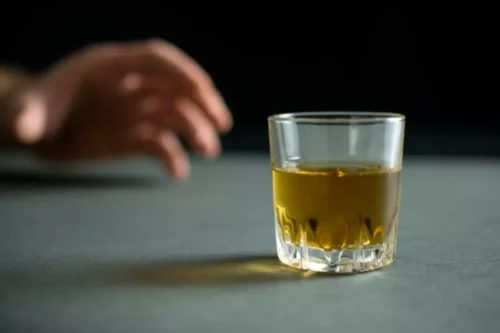Videos de Sexo > Sober living > Alcoholism: Causes, Risk Factors, and Symptoms
Descricao do video:

Your doctor or healthcare provider can diagnose alcohol use disorder. They’ll do a physical exam and ask you questions about your drinking habits. Alcohol is a toxic and psychoactive substance with dependence producing properties. In many of today’s societies, alcoholic beverages are a routine part of the social landscape for many in the population. This is particularly true for those in social environments with high visibility and societal influence, nationally and internationally, where alcohol frequently accompanies socializing.
- Severity is based on the number of criteria a person meets based on their symptoms—mild (2–3 criteria), moderate (4–5 criteria), or severe (6 or more criteria).
- Discover the impact alcohol has on children living with a parent or caregiver with alcohol use disorder.
- When this occurs repeatedly over time, and when it begins to impact your health and your life, alcohol misuse can become AUD.
- Some people may drink alcohol to the point that it causes problems, but they’re not physically dependent on alcohol.
- Symptoms of alcohol use disorder are based on the behaviors and physical outcomes that occur as a result of alcohol addiction.
What are treatments for alcohol use disorder?
Combined with medications and behavioral treatment provided by health care professionals, mutual-support groups can offer a valuable added layer of support. In addition, enforcing drink driving countermeasures and securing access to screening, brief interventions, and treatment are effective and ethically sound interventions. The most cost-effective interventions are at the focus of WHO-led SAFER initiative aimed at providing support for Member States in reducing the harmful use of alcohol. If you’re receiving counseling, ask your provider about handling high-stress situations when you may feel like you need some additional mental health support. Alcohol misuse refers to single episodes during which you might drink excessively.
- In this disorder, people can’t stop drinking, even when drinking affects their health, puts their safety at risk and damages their personal relationships.
- These facilities will provide you with 24-hour care as you withdraw from alcohol and recover from your addiction.
- Alcohol use disorder can cause serious and lasting damage to your liver.
- The most common medicines used for this are acamprosate and naltrexone.
- Many people who seek treatment are able to overcome the addiction.
- Alcohol can cause abnormalities in the blood cells in several ways, including nutritional deficiency, marrow toxicity, and liver disease.
Short term
- Health professionals sometimes prescribe medications to reduce the symptoms of withdrawal.
- Once you’re well enough to leave, you’ll need to continue to receive treatment on an outpatient basis.
- If AUD is not treated, it can increase your risk for serious health problems.
- The system allows air to reach the lungs, helps oxygen circulate through the blood, and removes waste gases.
- Research shows a high correlation between alcohol misuse and high-risk sexual behavior, violence, crime, self-injury, and fatal injury from things like motor vehicle accidents.
Even drinking a little too much (binge drinking) on occasion can set off a chain reaction that affects your well-being. Lowered inhibitions can lead to poor choices with lasting repercussions — like the end of a relationship, an accident or legal woes. Each of those consequences can cause turmoil that can negatively affect your long-term emotional health.
Terms of Service apply.

Your liver detoxifies and removes alcohol from your blood through a process known as oxidation. https://ecosoberhouse.com/article/five-myths-about-alcoholism-you-probably-didnt-know/ When your liver finishes that process, alcohol gets turned into water and carbon dioxide. The WHO calls alcoholism “a term of long-standing use and variable meaning”, and use of the term was disfavored by a 1979 WHO expert committee. Drinking alcohol excessively can affect the quality of his sperm. If you’re trying to conceive, your partner should drink no more than 14 units of alcohol a week, which should be spread evenly over 3 days or more. The second is a medicine to reduce any urge you may have to drink.


These can affect several bodily systems and increase the risks of health conditions such as cancer, heart disease, and stroke. WHO works with Member States and partners to prevent and reduce the harmful use of alcohol as a public health priority. Both the volume of lifetime alcohol alcohol misuse use and a combination of context, frequency of alcohol consumption and amount consumed per occasion increase the risk of the wide range of health and social harms.


People should not try to use natural remedies on their own, but use them in conjunction with medical treatment and therapy options. Following diagnosis, a healthcare professional will work with a person to determine the best course of treatment. According to the Centers for Disease Control and Prevention (CDC), moderate drinking is typically defined as two drinks or fewer for men per day, or one drink or less for women. Alcoholics Anonymous is available almost everywhere and provides a place to openly and nonjudgmentally discuss alcohol issues with others who have alcohol use disorder.
Choose a topic to view and compare interventions:
In this context, it is easy to overlook or discount the health and social damage caused or contributed to by drinking. In addition, AUD is an addiction disorder, which means you may have a difficult time stopping alcohol consumption, even when you want to. The definition of AUD also includes the impact that such drinking has on your health and life. Many people with AUD do recover, but setbacks are common among people in treatment.


